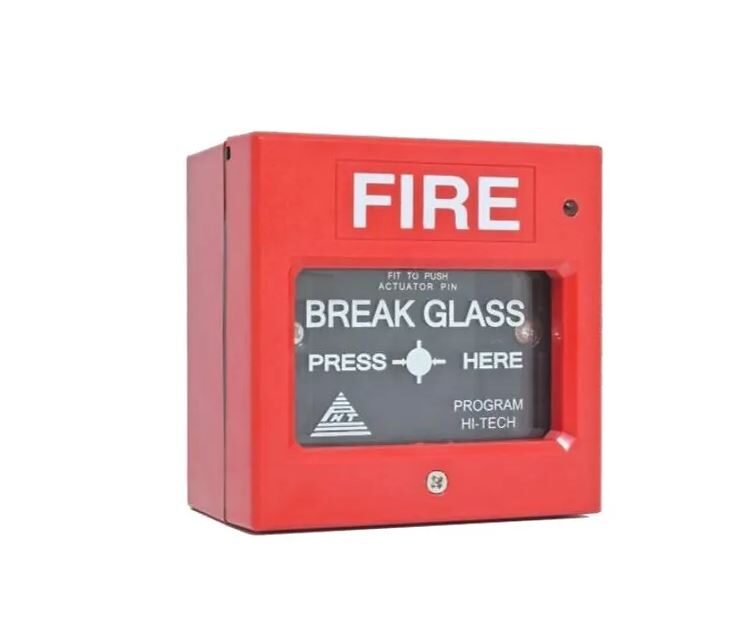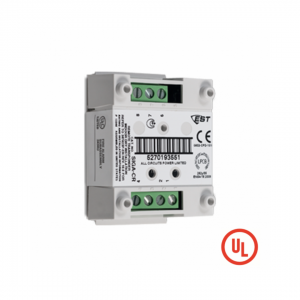Description : –
The PHT-MCP Fire Alarm Call Points are part of EST’s Signature Series system. These integrated Call Point assemblies feature the very familiar DEMCO D-108 Series Call Point packaged with EST’s Signature Series intelligent addressable/analogue interface electronics.
In PHT-MCP Call Points, the switch is held off by the ‘edge’ of the glass. When the glass is broken by pressing directly on it, the switch is released and an alarm sent to the Signature loop controller. A protective plastic coating on the glass prevents operator injury and inhibits the release of glass fragments.
The integral microprocessor built into each Signature Series Call Point provides four important benefits: – Self-diagnostics and History Log, Automatic Device Mapping, Stand-alone Operation, and Fast, Stable Communication.
Self-diagnostics and History Log – Each Signature Series Call Point constantly runs self-checks to provide important maintenance information. The results of the self-check are automatically updated and permanently stored in the Call Point’s non-volatile memory. This information is accessible for review any time at the control panel, PC, or by using the SIGA-PRO Signature Program/ Service Tool.
The information stored in the Call Point’s memory includes:
– Call Point serial number, address, and type code.
– date of manufacture, hours of operation, and last maintenance date.
– the number of recorded troubles, alarms, and time and date of last alarm.
– up to 24 possible trouble codes which may be used to specifically diagnose faults.
Automatic Device Mapping – The Signature loop controller learns where each device’s serial number address is installed relative to other Signature devices on the circuit. The loop controller keeps a “map” of the Signature Series devices connected to it.
The Signature Series Data Entry Program also uses the mapping feature. With interactive menus and graphic support, the wired circuits between each device can be examined. Layout or “as-built” drawing information showing wire branches (T-taps), device
types and their address are stored on disk for printing hard copy. This takes the “mystery” out of the installation. The preparation of “As-Built” drawings is fast and efficient.
Device mapping allows the Signature loop controller to discover:
– unexpected additional device addresses.
– missing device addresses.
– changes to the wiring in the circuit.
Stand-alone Operation – A decentralized alarm decision by the Call Point is guaranteed. On-board intelligence permits the Call Point to operate in stand-alone mode. If loop controller CPU communications fail for more than 4 seconds, all Signature devices on that circuit go into a stand-alone mode. The circuit acts like a conventional alarm receiving circuit. Each Call Point will still transmit an alarm if its glass is pressed and “broken”.
Fast Stable Communication – Built-in intelligence means less information needs to be sent between the device and the loop controller. Other than regular supervisory polling response, the Call Point only needs to communicate with the loop controller when it has something new to report. This provides very fast control panel response time and allows a lower baud rate (speed) to be used for communication on the circuit. The lower baud rate offers several advantages including:
– less sensitivity to circuit wire characteristics.
– less sensitivity to noise glitches on the cable.
– less emitted noise from the analogue wiring.
– twisted or shielded wiring is not required.
Alarm LED – A large red led on the front of the Call Point provides a visual indication of normal and alarm conditions. A flashing led means the station is in “alarm” state. A steady-on led shows alarm state – “stand-alone” mode.
Quality and Reliability – EST Signature Module is manufactured in North America to strict international ISO 9001 standards.
All electronics utilize surface mount technology (SMT) for smaller size and greater immunity to RF noise. A conformal coating is used for humidity and corrosion resistance.
Compatibility : –
PHT-MCP Call Points are compatible only with EST’s Signature Loop Controller.
Application Notes : –
The operating characteristics of the fire alarm Call Point is determined by its sub-type code or “Personality Code”. NORMALLY OPEN ALARM – LATCHING (Personality Code 1) is assigned by the factory; no user configuration is required. The device is configured for Class B IDC operation. An ALARM signal is sent to the loop controller when the switch is closed (i.e. when the glass is broken). The alarm condition is latched at the station.
Warnings & Cautions : –
This device will not operate without electrical power. As fires frequently cause power interruption, we suggest you discuss further safeguards with your fire protection specialist.
Testing & Maintenance : –
To test the Call Point simply insert the special test key (provided with every unit); the glass drops and the switch closes. Removing the key restores the Call Point to normal.
The Call Point’s automatic self-diagnosis identifies when it is defective and causes a trouble message. The user-friendly maintenance program shows the current state of each Signature Series device and other pertinent messages. Single devices may be deactivated temporarily, from the control panel. Availability of some maintenance features is dependent on the fire alarm system used.
Scheduled maintenance (Regular or Selected) for proper system operation should be planned to meet the requirements of the Authority Having Jurisdiction (AHJ).
Installation and Mounting : –
The Signature Series fire alarm Call Points flush mount to standard Conventional Demco D-108 Call Point and Surface Mounting Box. Program Hi-Tech recommends that Call Points be installed according to the latest recognized edition of national and local fire alarm codes.
Electronic Addressing – The Signature loop controller electronically addresses each Call Point, saving valuable time during system commissioning. Setting complicated switches or dials is not required. Each Call Point has its own unique serial number stored in its “onboard memory”. The loop controller identifies each device on the loop and assigns a “soft” address to each serial number. If desired, the Call Points can be addressed using the SIGA-PRO Signature Program/Service Tool.
Approval and Compliances : –
Tested by SIRIM Report No SIRIM/245/3831/9(22) 83LL130
Approved by Bomba Ruj No: BM/PK/80032/3(21)








Reviews
There are no reviews yet.